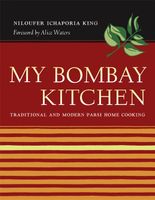Advertisement
Tamarind
Appears in
Published 2007
The English word comes from the Arabic tamar-i-hind, “date of India.” For information on the plant itself, see the Glossary. In U.S. markets, tamarind sometimes comes in its original package, a brown beanlike pod with a brittle skin containing several seeds encased in a fibrous sweet-sour pulp. The more mature the tamarind, the darker and sweeter the pulp. It is also sold in blocks of compressed pulp, the Indian version very dark and dry, the Thai, moister and lighter. A third option is the commercial tamarind extract from Thailand and India. The Thai varieties, which I prefer, are thinner and fresher-tasting; the Indian ones are darker, thicker, and sometimes almost tarry.

